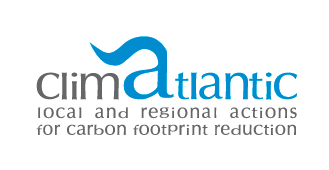NEWS & EVENTS : ENERGY

Energy Roadmap 2050: a secure, competitive and low-carbon energy sector is possible
12.15.2011
Emissions Trading System (ETS) credits should be taken out of the next phase of trading to help lift the sinking carbon price, said Environment Committee MEPs on Tuesday. MEPs also voted on measures aiming to get the EU on track to meet its 20% energy efficiency target by 2020.
climatlantic //
Energy Commissioner Günther Oettinger stated: "Only a new energy model will make our system secure, competitive and sustainable in the long-run. We now have a European framework for the necessary policy measures to be taken in order to secure the right investments."
The analysis is based on illustrative scenarios, created by combining in different ways the four main decarbonisation routes (energy efficiency, renewables, nuclear and CCS). None is likely to materialise but all scenarios clearly show a set of "no regrets" options for the coming years.
The Energy Roadmap 2050 identifies a number of elements which have positive impacts in all circumstances, and thus define some key outcomes such as:
•Decarbonisation of the energy system is technically and economically feasible. All decarbonisation scenarios allow achieving the emission reduction target and can be less costly than current policies in the long-run.
•Energy Efficiency and renewable energy are critical. Irrespective of the particular energy mix chosen, higher energy efficiency and important rising shares of renewables are necessary to meet the CO2 targets in 2050. The scenarios also show that electricity will play a greater role than now. Gas, oil, coal and nuclear also figure in all scenarios in different proportions, allowing Member States to keep flexible options in their energy mix provided a well connected internal market is achieved quickly.
•Early Investments cost less. Investment decisions for the necessary infrastructure up to 2030 must be taken now, as infrastructure built 30-40 years ago needs to be replaced. Acting immediately can avoid more costly changes in twenty years. The EU's energy evolution requires anyway modernisation and much more flexible infrastructure such as cross border interconnections, "intelligent" electricity grids and modern low-carbon technologies to produce, transmit and store energy.
•Contain the increase of prices. The investments made now will pave the way for the best prices in the future. Electricity prices are bound to raise until 2030, but can fall thereafter thanks to lower cost of supply, saving policies and improved technologies. The costs will be outweighed by the high level of sustainable investment brought into the European economy, the related local jobs, and the decreased import dependency. All scenarios get to decarbonisation with no major differences in terms of overall costs or security of supply implications.
•Economies of scale are needed. A European approach will result in lower costs and secure supply compared to national parallel schemes. This includes a common energy market which should be completed by 2014.
Background
The aim of the roadmap is to achieve the low-carbon 2050 objectives while improving Europe's competitiveness and security of supply. Member States are already planning national energy policies for the future, but it is necessary to join forces in coordinating their efforts within a broader framework. The Roadmap will be followed by further policy initiatives on specific energy policy areas in the coming years, starting with proposals on the internal market, renewable energy and nuclear safety next year.
The EC published in March 2011 the overall decarbonisation roadmap covering the whole economy. All sectors – power generation, transport, residential, industry and agriculture –were analysed. The Commission has also been preparing sectoral roadmaps, among which the Energy Roadmap 2050 is the last one, focusing on the whole energy sector.
Further information
The Energy Roadmap 2050:
http://ec.europa.eu/energy/energy2020/roadmap/index_en.htm
For more information on the Roadmap 2050, see MEMO/11/914.








